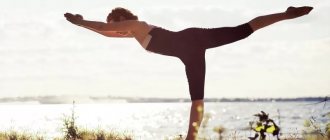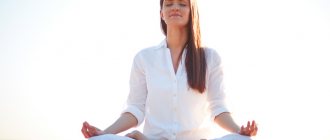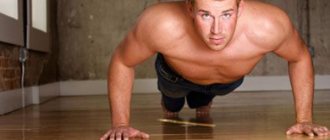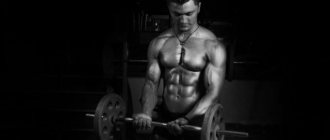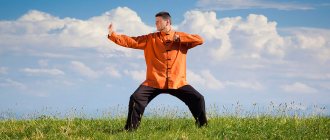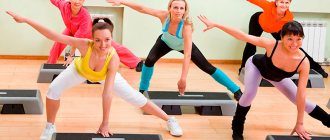What is Pilates
Unlike fitness, Pilates is a set of exercises aimed at developing muscles and increasing body density. With regular exercise, posture is corrected and coordination is improved. Muscles become more elastic, joint mobility and spine flexibility increase.
Pilates classes focus on controlling breathing technique and abdominal muscles. The effectiveness of training is achieved not through the quantity of exercises performed, but through their quality. Special deep breathing and precise exercises help strengthen the muscles of the abdominal cavity, pelvis, and back.
It is very important to follow the exercise technique, because results can only be achieved in this way. Pilates is more aimed at strengthening and toning muscles, but it does not provide strength and aerobic exercise.
The main benefit of Pilates is the balanced muscle load, which reduces the likelihood of injury. Strength and cardio training involve targeted stress on certain muscle groups; with Pilates, the muscles work evenly.
Classes are held at a calm pace, exercises replace each other gradually, becoming more and more complex. And the fatigue will be different, not the same as during fitness - deeper, but not as strong.
It is very important that as a result of exercise, chronic pain in the spine goes away. Due to the strengthening of the muscle corset and greater mobility of the vertebrae, elongation of the spine is observed. It is due to this that posture is corrected and even a slight increase in height. Let’s just say that a person stops “growing down.”
Pilates is also a certain philosophy. A single positive movement of thought and body. Spiritual balance achieved through physical and moral stress. Commitment to the goal and its achievement.
Pilates for burning calories and losing weight
Fitness instructors receive a lot of questions about Pilates, and more specifically, how effective Pilates is for burning calories and losing weight .
The developer of this exercise system, Joseph Pilates, almost a hundred years ago, offered people an effective remedy that, if done correctly, offers significant effects on the mind and body, and really has an impact on weight loss.
What is Pilates and what does it give?
- Spinal mobility
- Flexibility
- Muscle endurance and muscle tone
- Strengthening bones and ligaments
- Burning calories
This may sound too good to be true, but let us be clear about what Pilates does NOT do:
- Pilates is not an aerobic workout. The heart rate may rise during Pilates exercises, but the load on the cardiovascular system as a whole will not reach aerobic levels.
- Pilates is not a replacement for strength training. Pilates works the core muscles, but does not build muscle mass compared to traditional strength training using weights.
- Pilates is not the main way to burn calories. Research shows that, on average, 50 minutes of Pilates burns somewhere between 175 calories (beginners) and 250 calories (advanced). How many calories are burned during physical activity or exercise (more details).
Thus, Pilates can be a complementary component to your fitness program, which includes cardio, strength training and yoga. Pilates cannot fully replace exercise for weight loss.
1. Breathe correctly. Joseph Pilates said: “Even if you study with different instructors, learn to breathe correctly.” Use a deep breathing technique, the inhalation should expand the chest (diaphragm), but not the stomach, which should remain flat as you inhale, as if you were wearing a corset.
2. Concentrate on pulling your shoulders away from your ears and retracting your shoulder blades toward the center of your spine.
3. Hold your spine correctly. Your head and neck should follow the natural line of your spine at all times.
4. Concentrate on each movement as if it were coming from the center of the body (your core).
5. Don't take advantage of the opportunity to move. The movement should be done slowly and in a controlled manner.
6. Keep your body stable (balanced) on the mat. If you, concentrating on the basic movements, begin to sway or slide on the mat while performing the movements, then this is not correct.
7. Work in the correct range of motion. Beginners, as a rule, try to choose difficult exercises without mastering the basic ones. Likewise, wanting to “grab” everything at once, many people will work in large ranges of motion, but without following the instructions in point No. 6 (above).
The great thing about Pilates is that it offers something for everyone, no matter your fitness level. You can do Pilates at home using a DVD, or in a gym or fitness center. Myths and misconceptions about fitness for weight loss (article).
How to improve your physical fitness without going to the gym.
Joseph Pilates said, “You'll feel better after 10 classes, look better after 20, and be a whole new person after 30 classes.”
By the way, don’t forget to drink water, including during training, how much water you need to drink during training - here.
1. Breathe correctly. Joseph Pilates said: “Even if you study with different instructors, learn to breathe correctly.” Use a deep breathing technique, the inhalation should expand the chest (diaphragm), but not the stomach, which should remain flat as you inhale, as if you were wearing a corset.
2. Concentrate on pulling your shoulders away from your ears and retracting your shoulder blades toward the center of your spine.
3. Hold your spine correctly. The head and neck should follow the natural line of your spine at all times.
4. Focus on each movement as if it were coming from the center of the body (your core).
5. Don't use the right moment to move. The movement should be done in a slow and controlled manner.
6. Keep your body stable (balanced) on the mat. If you are really concentrating on the basic movements and begin to sway or slide while performing the movements, then this is not correct.
7. Work in the correct range of motion.
Beginners, as a rule, try to choose difficult exercises without mastering the basic ones. Likewise, wanting to "get" the work, many people will work through large ranges of motion, but without following the instructions in point #6 (above). The great thing about Pilates is that it offers something for everyone, no matter your fitness level. You can do Pilates at home using a DVD, in a gym or fitness center
History of origin
Since its inception, Pilates classes have long been available only to a certain circle - athletes, dancers, artists. Even without special knowledge, J. Pilates himself intuitively followed the idea of “navel to spine,” symbolizing the protection of the body. When performing exercises, the transverse abdominal muscle actively works and all the deep muscles are involved, making the body more dense, strong and beautiful.
Joseph Pilates gave classes an individual character - he introduced special exercises based on the nature of the injury or the well-being of the students. Over time, after the death of the founder, the method continued to develop, incorporating the best developments of trainers and the latest advances in medicine.
Today Pilates is accessible and, moreover, recommended to almost everyone - without restrictions on age or condition. Training helps to quickly recover from injuries to the joints of the arms and legs, and the spine.
Interesting. By the way, Joseph Pilates insisted on eradicating bad habits and striving to come to an awareness of the need to restore one’s own health.
The main principles of the Pilates method for weight loss
Those wishing to engage in this area must first study the basic principles:
- Concentration. When performing the exercises, you need to be as concentrated and collected as possible, and then the result will pleasantly please you.
- Centering. When doing tasks, tense your abdominal muscles as much as possible, straighten your spine, try to pull your navel towards your spine.
- Control. It is always necessary to clearly understand which muscle group is being worked on at the moment.
- Breath. Breathing is an integral part when performing exercises. Inhale through your nose, exit through your mouth.
- Traction. Close your shoulder blades and feel the spine tense. Do the exercises without raising your shoulders.
Pilates is suitable not only for people with excess body weight; more and more pregnant women are attending classes, since a special complex for women in the “position” is designed to strengthen and stretch the pelvic muscles, which is a very important point before preparing for childbirth.
Women after childbirth also actively engage in Pilates, thereby tightening their abdominal muscles and actively getting into shape, losing weight during classes.
What are the benefits of Pilates?
The main goal of the training is to restore mobility and natural flexibility of the spine and joints, around which a beautiful, dense, elongated muscle is formed. As a result, the spine restores its normal position, and the spinal discs regain their shock-absorbing properties.
Pilates gives flexibility and freedom of movement. The effect is achieved through regularity and correctness of classes.
The main advantages of Pilates:
- You get a beautiful flexible body with elastic muscles. At the same time, you can avoid pronounced relief and over-pumping of muscles.
- Alignment and stabilization of the spine. Pilates has been proven to help relieve back and lower back pain.
- Working out the deep abdominal muscles. Visceral fat goes away, the stomach becomes flat and elastic.
- Posture improves. By straightening the spine, the functioning of internal organs improves and back pain disappears.
- The shape of the body becomes different - the lines of the figure are stretched and defined, which is especially noticeable in the most problematic areas of the abdomen and hips. Massiveness goes away, external lightness appears.
- Safety of exercises - training is recommended during the period of rehabilitation after injuries to the joints and spine, as well as for prevention purposes.
- Deep breathing increases blood circulation and increases lung capacity. Relieves depression, normalizes sleep. The uncomfortable feeling of anxiety disappears.
- Increases flexibility and mobility of joints. Every movement in Pilates is aimed at safely stretching the muscles and increasing the motor activity of the joints.
- Blood pressure decreases, the functioning of the cardiovascular system improves, which has a beneficial effect on the general condition of the body.
- Improves body coordination and balance. After just a few lessons, you will feel that your movements have become more precise and your step has become easier.
- Muscle imbalance is eliminated - all muscle groups are involved when performing exercises. The body is worked out as a whole, and not in separate areas.
- You can do Pilates at any age and with different physical fitness. A special advantage is that training is available even to those who suffer from diseases of the musculoskeletal system.
- Some exercises are suitable for performing during pregnancy. Strong, elastic muscles help reduce tension in the lower back, and proper deep breathing and good stretching will help make labor easier.
Pilates is always a good mood and a boost of energy. After training, you will notice pleasant fatigue and a feeling of satisfaction.
For the figure
What does Pilates do for your figure? The body becomes light and toned. Due to the deep development of muscles, their elasticity increases, which certainly affects the external contour of the figure. Posture improves - shoulders straighten, stoop disappears, height increases.
Changes are especially noticeable in the abdomen and hips. The characteristic deposits on the outer line of the thigh disappear, and the visual “heaviness” disappears. By lengthening the muscles, a person becomes noticeably taller and slimmer.
For women
Perhaps the main result of doing Pilates for women is strengthening the pelvic floor muscles. Due to this, you can subsequently avoid one of the significant age-related problems (spontaneous urine leakage). Another plus in favor of Pilates is that there are no contraindications for pregnant women.
Well, and of course - a feeling of satisfaction from your appearance and good health.
For the body
Without a doubt, Pilates classes bring not some abstract, but very specific benefits to the body. Due to the straightening and lengthening of the spine, the internal organs fall into place and begin to function normally. The functioning of the liver, kidneys, gastrointestinal tract, and cardiovascular system improves. The volume of the lungs and, accordingly, the volume of blood increases.
The most noticeable effect of Pilates is on the condition of the joints. Due to the gradual stretching of muscles and ligaments, joint mobility increases. That is why the technique is recommended for rehabilitation after injuries.
How to lose weight by doing Pilates?
For people who are overweight, the question becomes relevant: is it possible to lose weight by doing Pilates?
While on a diet, the human body begins to experience stress, gradually getting used to changes in diet, lifestyle, and an increase in the amount of physical activity. For those who have just begun to change their lifestyle, dreaming of a beautiful, fit and slender figure, this complex is the starting point in a long journey to beauty.
Gradually, day after day, toning all muscle groups, you can subsequently move from this type of fitness to other types of strength exercises (if there are no contraindications for strength exercises).
At the initial stage, you need to have patience, a clearly defined goal, not expect instant and quick results, but work every day, putting your body in order.
You can practice not only in the gym, but also at home, using Pilates exercises at home. But first, it’s better for beginners to go to the gym. An experienced instructor will show you in detail how to do the exercises correctly and what to pay attention to. After all, this training technique must first be mastered well.
Some basic principles for those who want to lose weight:
- First of all, it is necessary to perform all physical activities every day, that is, regularly. There is no need to justify yourself if you miss and think that tomorrow everything will be different. This is just an excuse that justifies your laziness. In this case, you may never achieve your cherished goal, the result of which is weight loss.
- The result will be noticeable in a couple of months. In six months, you will be pleased to look at your elastic and toned body.
- Beginners need long-term exercise to lose weight, not 15-minute physical warm-ups.
- It is important to remember that you should avoid the most harmful foods. Eating fatty and high-calorie foods will not achieve your desired results.
Be sure to read: Classification of cardio equipment for training at home
Is it possible to lose weight with Pilates?
It would probably be more correct to say that you cannot lose weight quickly with Pilates. Those who want to lose weight as quickly as possible need to engage in more active types of fitness. Pilates affects the body more gently and gradually.
With regular exercise, the body becomes denser and more elastic, and volumes disappear. The lines of the body acquire clarity, the external looseness and vagueness of the figure gradually give way to beautiful forms.
If we talk specifically about losing weight, then yes, you can lose weight. But we comply with two conditions - we introduce restrictions on food and take our time. Again, you can’t go hungry, as the training takes place with sufficient stress.
Important. In Pilates, the results do not come immediately. But after a few sessions, suddenly, standing in front of the mirror, you will notice that you have become a little slimmer, a little taller and a little thinner.
How many calories does a workout burn?
An hour of exercise burns about 250-300 kcal. Cardio training or strength training consumes about 300-500 kcal, and with particularly intense exercise you can lose up to 750 kcal.
The numbers confirm that you won't achieve rapid weight loss by doing Pilates. But if you follow a certain diet, the chance of losing weight (say, getting yourself in order) is very high.
Is it possible to lose weight by doing Pilates?
The ability to lose excess weight by doing Pilates depends on several factors:
- the frequency with which you practice,
- intensity of classes,
- type of diet.
Instructors recommend being realistic when setting weight loss goals. Although your desire may be to lose 5 kg per week, achieving this is almost impossible and even dangerous to your health. Aim for weight loss of 0.5 to 1 kg per week, but weight loss can be more intense if you also change your lifestyle.
Basic principles of Pilates
It should be remembered that Pilates is not just a set of exercises performed in a certain order. Joseph Pilates approached his method precisely as a way to harmonize and unite the body, mind and spirit.
The Pilates philosophy is based on six principles:
- Centering.
The basis of everything is a strong center. Tighten your abdominal muscles, pull your navel towards your spine. It is important that the spine is straight. You should feel muscle tension throughout the entire session. - Concentration.
Extreme composure and attention to every movement. If all your attention is paid to performing the exercises correctly, the results will begin to appear very quickly. - Precision and symmetry.
It is necessary to ensure that the body position is level, without distortions - the shoulder blades and shoulders should be on the same line. - Control.
Exercises are performed with conscious control of every movement and complete immersion in the action. - Breath.
No breathing - no Pilates. During classes, the so-called average chest breathing is used, inhaling through the nose and exhaling through the mouth. - Traction.
During training, you need to feel the stretch throughout the entire spine.
Important. These six principles should always be followed during training, regardless of where you are - at home or in the gym. But simultaneous classes and talking on a mobile phone are not for Pilates.
How many calories are burned when doing Pilates?
Author: Dmitry Sirotkin
Of course, when choosing exercises for weight loss, it is useful to understand how effective they are.
How are things going with Pilates in this regard, how many calories are burned?
Admittedly, Pilates is not the best way to lose weight. As calculations from the calorie calculator captaincalculator.com show, when doing Pilates, you can spend on average from 189 kilocalories (with a weight of 60 kg) to 378 kilocalories (with a weight of 120 kg).
In general, this is approximately the same as the caloric expenditure of yoga or walking. For example, calorie consumption when walking for an hour ranges from 180 kilocalories (with a weight of 60 kg and a slow pace) to 630 kilocalories (with a weight of 120 kg and a fast pace). As you can see, with a fast pace of walking, and in the case of yoga, when doing power yoga, Pilates is even noticeably inferior to them in terms of calorie consumption (see also Pilates or yoga, which is better for losing weight?).
If we talk about common exercise machines (an exercise bike, an elliptical, a treadmill, etc.), then the calorie consumption there is usually several times higher on average (for more details, see Which exercise machine is best for losing weight?).
Typically, as the exerciser weighs more, it becomes more difficult to achieve a further significant increase in the number of calories burned in practice. In this case, according to the calculations of this calculator, with a weight of 180 kg, you can consume 567 kilocalories per hour. Perhaps this time this figure is close to reality, since Pilates does not involve high or intense physical activity.
When choosing the type of physical activity that is optimal for you, it is useful not to limit yourself only to the number of calories burned, but to consider the advantages and disadvantages of a particular option. Let's take a closer look at them (for more details, see the article Pilates for weight loss).
Benefits of Pilates
- The ability to reduce fat deposits in problem areas such as thighs or buttocks is declared.
- Minimal risk of injury during exercise.
- Suitable for people in poor physical shape.
- Minimum contraindications for health reasons.
- Opportunity to practice both in the gym and at home.
- You can practice throughout the year without any problems.
- For training you need a little space and simple, compact exercise equipment.
Disadvantages of Pilates
- Low calorie burning efficiency.
- Increased demands on the quality of your work in the classroom require the involvement of an instructor and associated costs, at least in the initial period.
As you can see, the ratio of the advantages and disadvantages of Pilates seems to be very favorable, but these pair of disadvantages are significant from the point of view of the task of losing weight.
Thus, given the level of calorie burning characteristic of Pilates, it should not be considered as a good option for losing weight. Weight loss here is best viewed as a minor addition to the other effects of Pilates.
To help you choose the right type of activity, you may find the following articles useful:
- How many calories are burned when doing yoga?
- How many calories are burned when exercising with a hoop?
- How many calories are burned when swimming?
- How many calories are burned by jumping rope?
You may also find articles on weight loss and exercise equipment useful:
- Losing weight in the gym
- Weight loss methods
- Training tips for girls
I would be grateful if you share the link to the article on social networks with your friends. Use the network buttons below .
Comments are also highly welcome!
How to practice correctly: tips for beginners
The main mistake of all beginners is that we want everything at once. This is a fundamentally wrong approach, since exercises in Pilates vary in complexity - they can be compared to dance steps.
You shouldn’t exercise until you go crazy – two or three times a week for 30-40 minutes is enough. In most cases, Pilates is combined with other types of fitness training, but even if this is not the case, the specified time is enough to feel tired.
The warm-up is different from the traditional one. You just need to stand for 3-4 minutes and get ready for classes. The main thing is to stand with correct posture.
The exercises are performed smoothly, without jerking. In this case, it is necessary to ensure that the heart rate does not exceed the norm.
Important. Breathing control is perhaps the most difficult thing in the first lessons. You need to learn to coordinate your movements, breathing and immersion in the process.
An effective diet for Pilates exercises that allows you to lose weight well
1st Day:
- Breakfast: 1 pack of cottage cheese or half a pack along with kefir (no more than 5%).
- Snack: Fruits (except banana and grapes) – 200 gr.
- Lunch: Steamed fish or meat, stewed or baked.
- Garnish: any cereals or durum pasta.
- Snack: vegetable salad with 1 tablespoon of butter or low-fat sour cream, 100-150 gr. 2-3 slices of tofu cheese (this is a good pre-workout snack).
- Dinner: Salmon or pink salmon 120-150 g (no more than 2 times a week on training days). Steam or bake only!
- Garnish: vegetable mixture without rice (100 g).
Be sure to read: The best arm exercises to avoid sagging skin
2nd Day:
- Breakfast: Omelet with the addition of no more than 1 teaspoon of olive oil 150 -200 g, bread made from 2 types of coarse flour or with the addition of bran 1-2 pieces, beef (veal or chicken), baked or boiled on rest days, when no training. Fresh vegetables upon request. Coffee, tea, possibly with sugar no more than 1 tsp. per 200 ml (eating toast with beef is regulated only by the feeling of fullness).
- Snack: If there was no toast at the first breakfast, then bread made from 2 types of hard flour, 1-2 pieces, beef (veal, chicken), baked or boiled on rest days!
- Lunch: Mushroom soup or seafood 250 ml, vegetable salad 150 g.
- Snack: Green apple, kiwi, orange, pomelo, tangerines, except watermelon, melon, persimmon, banana.
- Dinner: salad (1 cucumber, 2 tablespoons of canned green peas, herbs, sour cream or matsoni) 100-150 gr.
3rd Day:
- Breakfast: oat pancake (3 tbsp oatmeal, 2 whites and one yolk) with tomatoes and grated cheese.
- Snack: A handful of dried fruits and nuts, tea or coffee without sugar!
- Lunch: Chicken liver 120 g, stewed with 1 spoon of sour cream, diluted in water, 100 g of buckwheat porridge + chopped vegetables 100-120 g.
- Snack: Green apple, kiwi, orange, pomelo, tangerines, except watermelon, melon, persimmon, banana.
- Dinner: A pack of cottage cheese (no more than 2.5% or half with kefir (1%) with bran 2 tablespoons, dried fruits 2+2 (regulated only by hunger), tea if desired (this option is subject to training after 18.00).
4th Day:
- Breakfast: fruit muesli (raw, not baked) or fitness Nestle flakes containing whole grain flakes 5-7 spoons (no more than 2 times a week), seasoned with any (no more than 2.5%) kefir or natural yogurt , 1-2 tbsp. l. Bran, tea, coffee with 1 teaspoon of sugar. If you are still hungry - toast from bread (2 grades of coarse flour) with boiled beef!
- Snack: Protein or fruit bar.
- Lunch: Lean veal soup (beef, chicken, fish) with a portion of potatoes, cabbage and a little butter. The simultaneous presence of potatoes and pasta, rice is excluded! 200 ml + 120 g meat protein. Vegetable salad 100-150 gr.
- Snack: Kefir or yogurt (no more than 2.5%) 200 ml according to the feeling of fullness, 1 fruit.
- Dinner: Omelette of 2 proteins and salad of fresh vegetables with the addition of olive oil 150 g.
Day 5:
- Breakfast: Oatmeal pancake with tomatoes and grated cheese.
- Snack: Any fruit 200 g (banana once a week on training days).
- Lunch: steamed meat or fish, baked or stewed 150-200 g, durum wheat pasta 120 g, vegetable salad
- Snack: Vegetable salad, seasoned with 1 tbsp. spoon of butter or sour cream (up to 20% fat), 100-150 gr. 2-3 slices of tofu cheese (this is a good pre-workout snack).
- Dinner: Baked fish with vegetables 250 gr.
If you follow this diet, your weight will begin to decrease effectively and smoothly; regular Pilates workouts will make your body slim, fit and graceful!
Who is Pilates for?
Pilates should be taken into account by those who are contraindicated in shock training due to problems with joints and blood vessels. The low impact load and relatively low pace of each exercise eliminate the occurrence of injuries and do not provoke an increased heart rate.
Regular exercises help strengthen the muscle corset, straighten the spine, and improve posture. Therefore, Pilates is perfect for those who want to look beautiful and attractive without grueling exercise.
Please help make this article better. Answer just 3 questions.
Contraindications and harms of Pilates
Unlike other types of fitness, Pilates is a calm, low-impact workout. It is believed that people of almost any age, and even the very elderly, can do it.
However, there are a number of contraindications to training:
- recent operations;
- cardiovascular diseases;
- diseases of the musculoskeletal system during exacerbation;
- severely overweight or obese;
- pregnancy – intensive exercise is contraindicated.
Important. After 40 years, it is recommended to visit a doctor before starting classes.
Possible restrictions
Like any system, Pilates classes have some limitations. Moreover, it is important to remember that these are not prohibitions! Thus, it is not recommended for people over 40 to start exercising on their own without physical training or with exacerbation of chronic diseases. Pregnant women should consult a doctor (in this delicate situation it is important not to harm the development of the fetus), as well as persons:
- have recently undergone surgery;
- with serious diseases of the cardiovascular system or musculoskeletal system;
- obese or significantly overweight.
Is it possible to exercise while pregnant?
Certain exercises based on the Pilates method are included in the training complexes for pregnant women. Training takes place in a relaxed manner with minimal stress. The focus is on proper breathing and strengthening, stretching the abdominal and back muscles.
An elastic and durable muscle corset allows you to reduce the load on the spine and reduce the risk of lower back pain. Proper breathing will ease contractions and ensure adequate oxygen supply to the baby during labor.
What clothes are best to wear when working out?
The main requirement for clothing for Pilates is that it should be comfortable and not restrict movement. The material should include natural thread that provides air exchange and moisture absorption.
All Pilates exercises are distinguished by precise movements, so it will be more rational for clothes to fit close to the body. Long wide trousers and “loose” T-shirts should be avoided - not only does it look unaesthetic, such clothing interferes with control over the exercises and acts as a distraction.
Shoes - such that the foot is comfortable. Pilates is a low-impact workout with minimal stress on the joints. Therefore, there are no such strict requirements as, for example, in step aerobics. You can buy sneakers or sneakers with thin soles, whichever is more convenient for you.
In most cases, training takes place barefoot on individual mats.
What is needed for classes?
Before starting classes, there are important points to consider:
- At least one hour should pass after the last meal;
- After classes, you can eat no earlier than an hour later;
- Pilates goes well with SPA treatments;
- Exercises are performed on a special mat or towel;
- There should be no pain during the exercises;
- You can’t do exercise when you have a cold, feel unwell or are in a bad mood; it won’t bring any benefits.
You should dress loosely for training so that your clothes do not restrict movement. At the same time, it is important to see how correctly the exercises are performed. It is better to exercise in socks or barefoot, since the muscles of the feet and legs are fully involved in the work.
Differences between Pilates and yoga, stretching and callanetics
Pilates is based on the philosophy of harmonizing the body, mind and spirit - this can be seen as similar to yoga. The only thing is that the age of yoga is counted in thousands of years, and Pilates is only less than a hundred years old. If you look at the exercises, Pilastes is still oriented towards movement, and yoga is statically oriented.
The second similar trend in fitness is stretching. Certain elements of stretching are also present in Pilates, but the latter is more dynamic. The main goal of Pilates is flexibility, strengthening the muscle corset, straightening and stabilizing the spinal column. And stretching is aimed more at increasing joint mobility and stretching muscles.
Another “twin brother” of Pilates is callanetics. It is based on a complex of elements of ballet, yoga (asana) and breathing techniques. The technique is aimed more at burning fatty tissue, although regular exercise also strengthens the muscles of the back and abdomen. The main difference between callanetics and Pilates is a calmer pace and complex poses, which are sometimes impossible to master without a trainer.
Is it possible to practice at home?
Pilates can be practiced at home. There are a huge number of video tutorials on the Internet, among which you can easily find one that suits your level of training.
Don’t forget that when preparing for Pilates, the same rules apply as for other types of fitness - you can’t eat too much immediately before training.
Select an entry in Russian or one that you understand. During the classes, the instructor explains how to breathe, how to concentrate correctly and what points to pay attention to.
Pilates for weight loss at home
Once you have mastered the exercises in the gym, you can start doing Pilates at home.
To do this, buy DVDs where the video instructor will show each exercise in detail, starting with the warm-up. The positive thing about working out at home is that you don’t have to spend money on buying various exercise equipment. All exercises are very accessible and easy to remember; you just need to show persistence and daily hard work.
When starting the fight against excess weight, you need to pay attention to the abdominal area. A toned stomach and perfect abs depend on proper nutrition and physical activity.
Exercises for the abs
- Lie down on the floor, having previously laid out an exercise mat, bend your legs at the knees, with your arms along your body. Slowly begin to twist, but do not tuck your chin toward your body. Perform lifts until your shoulder blades lift off the floor. Next, take a deep breath and smoothly lower yourself to the starting position.
- Lie on your back, while stretching your legs and arms. Slowly raise your legs to a 45-degree angle. Next, raise your shoulder blades and actively “pulse” with your hands. Inhale and exhale through your nose. Repeat the exercises several times.
- Lying on your back, raise your arms up towards the ceiling. Take a deep breath and exhale, then begin twisting,” press your chin to your chest. Having reached a sitting position, smoothly stretch both hands towards the soles of your feet.
- Starting position: lying on your back. Pull your neck, head and shoulders towards your chest, while you need to clasp your lower leg with your hands. After exhaling, align your legs at an angle of 45 degrees and simultaneously raise your arms up. Then exhale and pull your knees towards your chest. When doing the exercise, your shoulder blades and shoulders should be lifted off the floor.
- Lying on the floor, place your hands behind your head, with your elbows wide apart to your sides. Bend your left leg and at the same time reach for it with your right hand, and so on alternately. Repeat several times, but the body should not fall.
- Sitting on the floor, press your knees to your chest, then lean your body back slightly, while extending your legs forward so that they do not touch the floor. Keep your body straight, do several approaches and return to the primary position.
Be sure to read: Exercises for weight loss using a health disc
Also, for many representatives of the fair sex, it is important to have not only an elastic and beautiful belly, but also a thin wasp waist, so that the sides do not stick out from your favorite dress. Moreover, with the onset of the summer holiday season, this desire among young ladies increases several times, which is very commendable.
Exercises for slimming the waist and sides
The Pilates program helps you lose weight in both your sides and waist.
- Stand on the floor. Place your feet shoulder-width apart. The right hand should be on the belt, the left hand should be in an upward position. Slowly bend to the right, leaning strongly toward the floor, then repeat on the other side.
- Lying on your back, place your hands behind your head and raise your straightened legs, then hold the “corner”.
- Sitting on the floor, spread your legs out to the sides as far as possible. Next, bend across the side to one or the other leg with both hands. At the same time, try to stretch as much as possible.
- This exercise is difficult, but very effective for losing weight on the sides. Lie on your side and lean on one hand, placing the other behind your head. Lift your body off the floor at the same time, keeping your legs together. Try to hold your torso up, then lower and repeat on each side.
Feedback on the results
Review 1
I have been doing Pilates for almost 2 years. After the first lesson I practically couldn’t walk - everything hurt, I hobbled around the house from table to table)))
Pilates is a drop-dead cool thing. In principle, it will not help you lose excess weight, well, if you rely only on it)) But it will strengthen muscles, increase body tone, elasticity, generally improve well-being and correct posture. We work out on fit balls, with dumbbells, with some small balls, rubber things that look like jump ropes, but most often you just need a mat and that’s it.
At first everything will hurt, but then the body will get used to it. I practice 2 times a week and sometimes a third time at home. But this is quite enough for me. It is advisable not to eat at least an hour before Pilates and 2 after it, otherwise everything that you worked out will come back to you with food. During classes, the smallest and deepest muscles are pumped, that is, you will have full body tone, starting from the deepest layers.
It's best to go in the evening. Have dinner at 6 o'clock. At 7-8 go to Pilates and that's it - then go to the bath and sleep. And your body will make you happy =)
Review 2
I have long been looking for a sport that would suit me, a person who does not like sports. Pilates is very similar to yoga, but I didn’t like yoga, but Pilates fell into my soul.
The main advantages of pitas are that you can exercise at home, at any time of the day, all the exercises “treat” you inside and out, accelerated weight loss and your body becomes toned as if by itself, since the exercises are relaxing, pleasant, and do not cause fatigue or tension - sheer pleasure! After a hard day, Pilates relaxes you, before the start of the day it energizes you, and after a few classes you will be ecstatic at how quickly your body gets back in order!
Calmness after classes is a real miracle! It is important for a woman to be calm, especially in the modern world, calm is worth its weight in gold! Pilates gave me this, what a pleasure it is to come home fresh, rested, not irritated, and even a toned body!
Pilates is suitable for both completely unathletic ladies and “advanced” athletes. In any case, you will receive benefits and pleasure!
Review 3
My back and neck often hurt, I had terrible migraines, and, among other things, fat on my stomach began to appear. And so I decided to go in for sports. I scoured the Internet for fitness clubs near my home and settled on the one with Pilates. I bought myself a uniform and went to class... I really liked everything. Very competent instructor. He explains in such a way that even with your eyes closed you can understand what needs to be done. The main thing in Pilates is breathing; it also strengthens the muscles throughout the body, especially the muscular corset of the back. I’ve been walking twice a week for five months now, my stomach and sides have tightened, even my husband noticed this, which is especially nice. Thighs strengthened. Butt. The loads are within the capabilities of everyone, because this sport is designed for absolutely everyone and for all ages. Someone writes that after the first workout, my whole body hurt like crazy... I didn’t have that. The trainer said that if the exercises are performed correctly, nothing should hurt. Only the next day you feel a slight tone in the muscles from the workout. My head has practically stopped hurting, although before I was heavily on painkillers, now I practically don’t remember them. My back still hurts, but I think this will gradually go away. My verdict is this: do Pilates and your body will THANK YOU.

